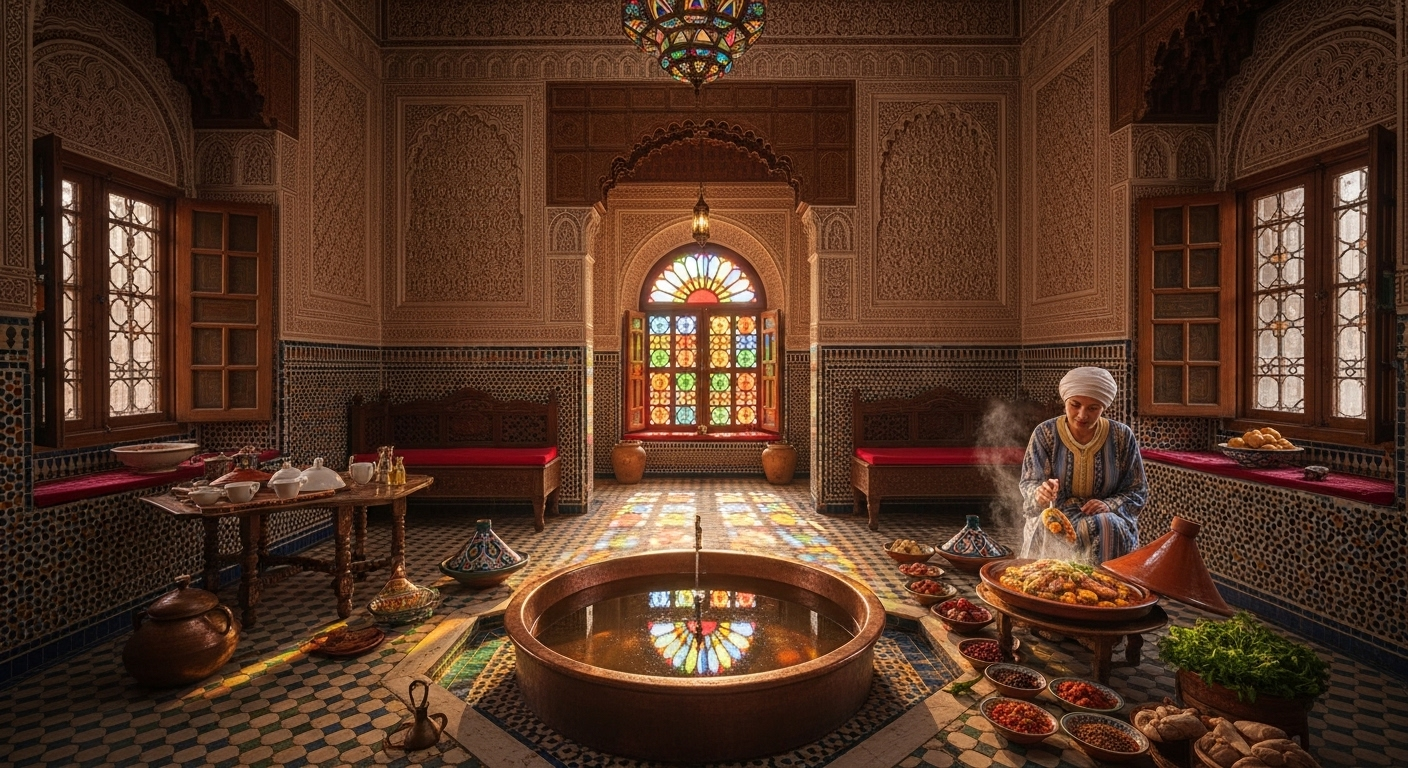Delving into the Richness of Moroccan Cuisine: A Unique Culinary Voyage
Morocco, a country known for its vibrant culture and rich history, also boasts an incredibly diverse and flavorful cuisine. This article will explore Moroccan cuisine, its unique features, and the innovative ways it is being interpreted in today's culinary world.

Morocco on a Plate: An Overview
Moroccan cuisine is a delightful fusion of influences from Berber, Moorish, Mediterranean, and Arab cultures. The use of spices like cumin, coriander, saffron, cinnamon, and paprika lends Moroccan dishes their characteristic depth of flavor. Tagines (slow-cooked stews) and couscous are among the most well-known Moroccan dishes, but there is much more to discover.
The Art of the Tagine
The tagine is both a cooking vessel and a dish. Named after the conical clay pot in which it’s cooked, tagine is a slow-cooked stew that can include meat, poultry, or fish, along with fruits, vegetables, and a myriad of spices. The slow-cooking process allows for the flavors to meld beautifully, resulting in a dish that is both complex and comforting.
Couscous: More than Just a Side Dish
Couscous, a staple in Moroccan cuisine, is made from tiny granules of durum wheat. Traditionally, it’s served with a meat or vegetable stew spooned over it. However, modern interpretations have seen it being used in salads, sides, and even desserts. The versatility of couscous is a testament to its importance in Moroccan food culture.
Bread and Moroccan Culture
Bread, or ‘khobz’ in Arabic, is a vital part of every Moroccan meal. Whether it’s a simple round loaf or a stuffed ‘msemen’ (flatbread), bread is used to scoop up tagines or served alongside couscous. It’s not just a food item – it’s a symbol of hospitality and shared meals in Moroccan culture.
An Innovative Twist on Traditional Sweets
Moroccan desserts, traditionally sweet and rich with ingredients like dates, honey, and almonds, are being given a modern twist. Chefs worldwide are experimenting with traditional recipes, creating fusion desserts that marry Moroccan flavors with contemporary culinary techniques.
-
The ‘bastilla’, traditionally a savory pie, has been reimagined as a sweet pie filled with almond cream.
-
‘Ghriba’, a type of Moroccan cookie, is being given a modern twist with the addition of matcha or earl grey tea.
Conclusion
Moroccan cuisine, with its diverse influences and flavorful dishes, offers a rich culinary voyage for any food enthusiast. Its traditional dishes and ingredients are being explored and reinterpreted in innovative ways, adding another layer of interest to this already fascinating cuisine. Whether you’re a seasoned foodie or a curious beginner, delving into Moroccan cuisine promises a unique and rewarding culinary adventure.




